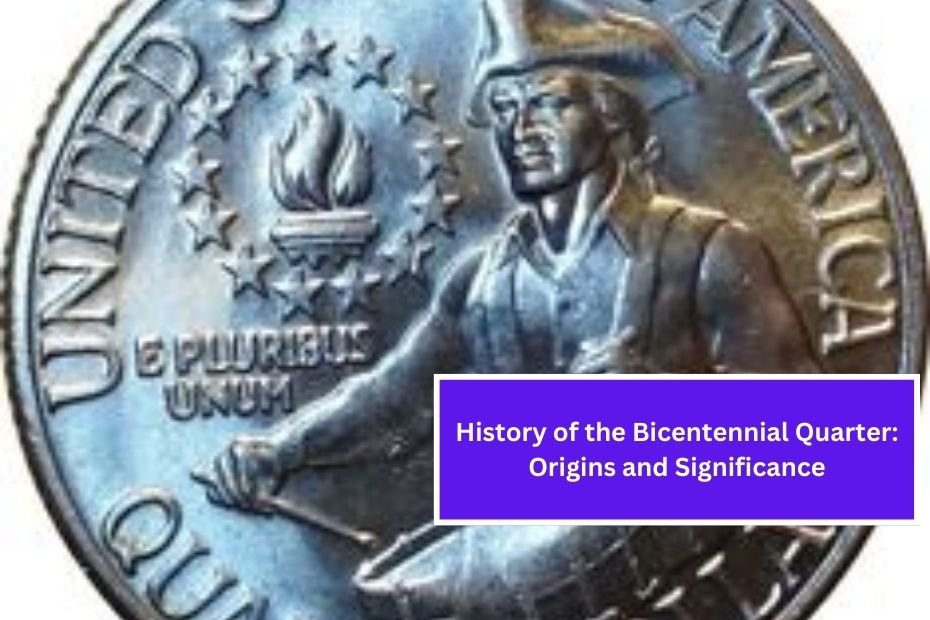The Bicentennial Quarter is a special coin that holds a significant place in American history. This coin, which was minted in 1975 and 1976, celebrates the 200th anniversary of the United States. In this article, we will explore the origins of the Bicentennial Quarter, its design, production, and its importance to American culture and numismatics (the study of coins).
Origins of the Bicentennial Quarter
The idea for the Bicentennial Quarter was born as part of a nationwide celebration of the United States’ 200th birthday. The year 1976 marked the 200th anniversary of the signing of the Declaration of Independence, an event that laid the foundation for the nation. To honor this historic milestone, the U.S. Mint decided to create a special coin.
In 1973, Congress authorized the U.S. Mint to produce commemorative coins to celebrate the bicentennial. This initiative was not just limited to quarters; it also included half dollars and dollars. The goal was to promote national pride and encourage citizens to celebrate this momentous occasion.
Design of the Bicentennial Quarter
The Bicentennial Quarter features a unique design that sets it apart from regular quarters. The most noticeable change is on the reverse side of the coin. Instead of the traditional eagle, the Bicentennial Quarter showcases a depiction of the famous drummer boy, a symbol of the American Revolution.
Reverse Side
The reverse side of the Bicentennial Quarter features a soldier playing a drum. This design represents the spirit of the American Revolution and the fight for independence. Surrounding the drummer boy are the words “1776” and “1976,” marking the years of the American Revolution and the bicentennial celebration.
Obverse Side
The obverse side, or the front, of the quarter remains unchanged. It features the familiar portrait of George Washington, designed by John Flanagan. Washington is depicted facing left, and his name is inscribed above him, with the words “Liberty” and the year of minting below.
Designer
The reverse design was created by designer Jack L. Ahr, who won a competition held by the U.S. Mint to choose a design for the bicentennial coins. Ahr’s work captured the patriotic spirit of the era and resonated with the American public.
Minting Process
The Bicentennial Quarter was minted in two distinct years: 1975 and 1976. However, the quarters produced in 1975 have a small “S” mintmark, indicating they were struck at the San Francisco Mint. Those produced in 1976 have a “D” mintmark for the Denver Mint or an “S” for San Francisco.
Production and Distribution
The production of the Bicentennial Quarter began in 1975, with the U.S. Mint producing millions of these coins. The coins were distributed through banks and other financial institutions across the country. Many Americans collected them as souvenirs to commemorate the bicentennial celebration.
Special Strikes
In addition to regular circulation coins, the U.S. Mint also produced special collector’s editions of the Bicentennial Quarter. These included proof coins, which were made using a special process to create a shiny, mirror-like finish. These proof coins are highly sought after by collectors and often fetch higher prices than regular circulation quarters.
Significance of the Bicentennial Quarter
The Bicentennial Quarter holds cultural and historical significance for several reasons.
Celebration of American History
First and foremost, the quarter celebrates a pivotal moment in American history—the nation’s struggle for independence. The design of the drummer boy serves as a reminder of the sacrifices made by those who fought for freedom. It encourages reflection on the values of liberty and democracy that the United States was built upon.
Collector’s Item
The Bicentennial Quarter has also become a popular collector’s item. Many people began collecting these coins as a way to celebrate the bicentennial. As time has passed, collectors have sought after the coins, particularly those in uncirculated or proof condition. This demand has contributed to the coin’s value in the numismatic market.
Educational Value
Moreover, the Bicentennial Quarter serves an educational purpose. It provides an opportunity for people to learn about American history, the significance of the bicentennial, and the history of coin design in the United States. Schools and museums often use the quarter as a teaching tool to engage students in discussions about history and numismatics.
Legacy of the Bicentennial Celebration
The bicentennial celebration in 1976 was marked by various events, including parades, concerts, and fireworks. The Bicentennial Quarter is a lasting symbol of that celebration, representing the sense of unity and national pride that Americans felt during this time. It reminds us of the importance of community and shared history.
Impact on Future Coin Designs
The Bicentennial Quarter also had an impact on future coin designs. After its release, the U.S. Mint continued to explore innovative designs for coins. The success of the Bicentennial Quarter led to a renewed interest in commemorative coins, and several special coin programs were introduced in the following years.
Commemorative Coins
In the years following the bicentennial, the U.S. Mint produced many other commemorative coins to honor important events, people, and places in American history. This trend helped to create a culture of coin collecting and appreciation for the art and history behind each design.
Conclusion
The Bicentennial Quarter is more than just a coin; it is a symbol of American history, unity, and pride. Its unique design and significance during the 1976 bicentennial celebration make it a cherished item for collectors and history enthusiasts alike. By honoring the spirit of the American Revolution and the values of liberty and democracy, the Bicentennial Quarter continues to remind us of the rich history of the United States.
In summary, the origins of the Bicentennial Quarter, its design, minting process, and lasting impact on American culture and numismatics highlight its importance. As we reflect on this special coin, we are reminded of the enduring spirit of the nation and the celebrations that brought people together in 1976. The Bicentennial Quarter will always hold a special place in the hearts of those who recognize its historical significance and the values it represents.

